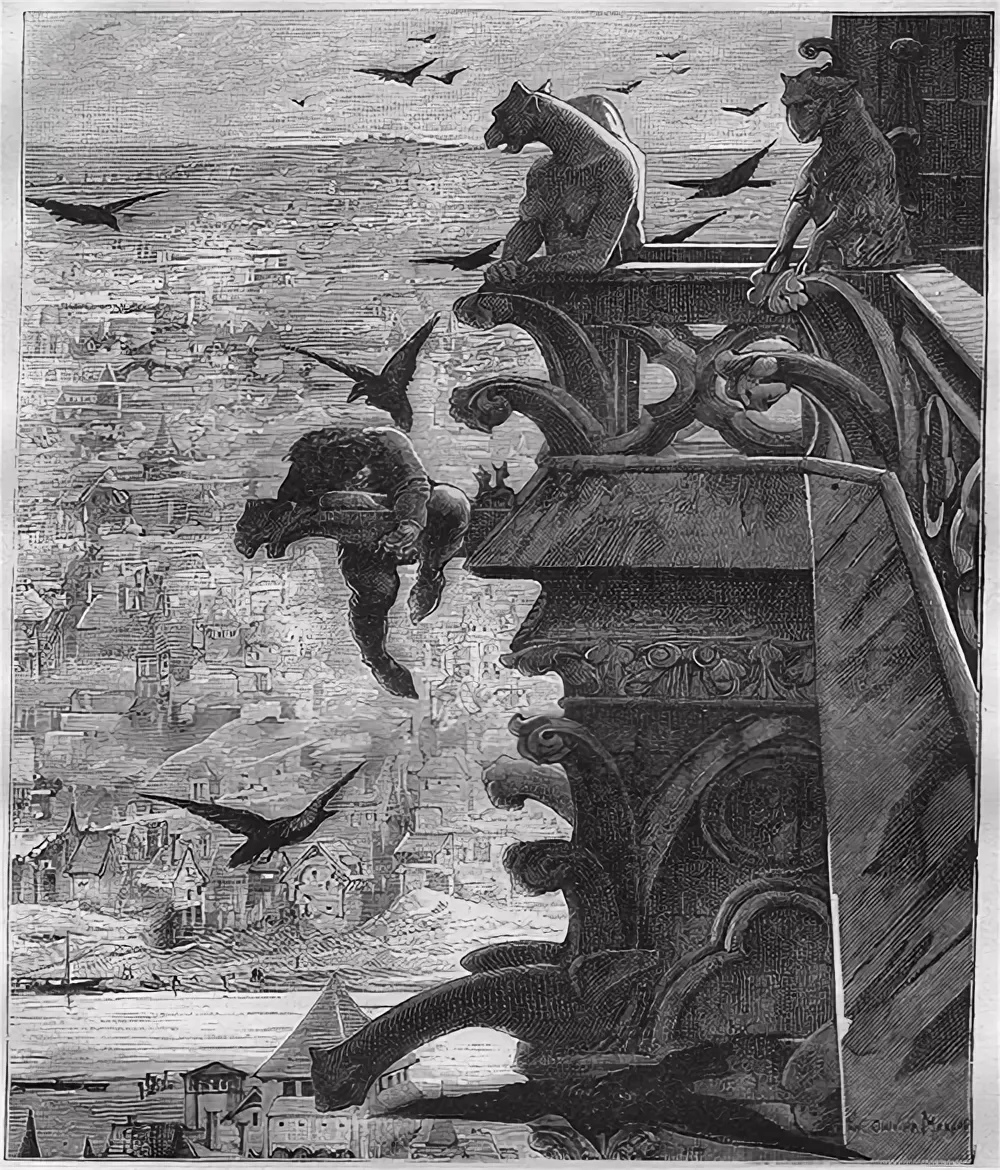The Hunchback of Notre-Dame (French: Notre-Dame de Paris, "Our Lady of Paris") is a French Romantic/Gothic novel by Victor Hugo, published in 1831. The original French title refers to Notre Dame Cathedral, on which the story is centered. Frederic Shoberl's 1833 English translation was published as The Hunchback of Notre Dame which became the generally used title in English. The story is set in Paris in 1482 during the reign of Louis XI.
 |
| By Luc-Olivier Merson (1846–1920) (Here) [Public domain], via Wikimedia Commons |
The architectural focus of the book becomes apparent in a few chapters. These chapters bored me. They read like a history textbook. It is not often that Hugo fell into this writing, but when he does the story suffers a long pause. I did not know the history of the book until I read the history on Wikipedia. These long story breaks then made sense. I must confess that if I had known, I would have skipped the architecture sections like I did the Hobbit's songs in The Lord of the Rings the first time I read it.
I did love the read. As a modern reader, Hugo's writing reminded me of Ernest Hemingway in his use of symbolism throughout that is difficult to overlook. The story evoked memories of Stephen King in its complex character interactions that end in dread and pain. The only drawback to the story is some of the predictability. The revealed relationships were always expected, but I am a modern reader. Much of what I have read before has likely been affected by Hugo causing me to expect the revelations.
The Kindle version I read was developed by Project Gutenberg. Project Gutenberg has numerous public domain book available in ebook and audiobook formats. Before paying for a public domain ebook or audiobook, check Project Gutenberg. Instead of supporting the overprice of public domain ebooks by retailers, you could download the Project Gutenberg book and donate the retail price to them.
No comments:
Post a Comment